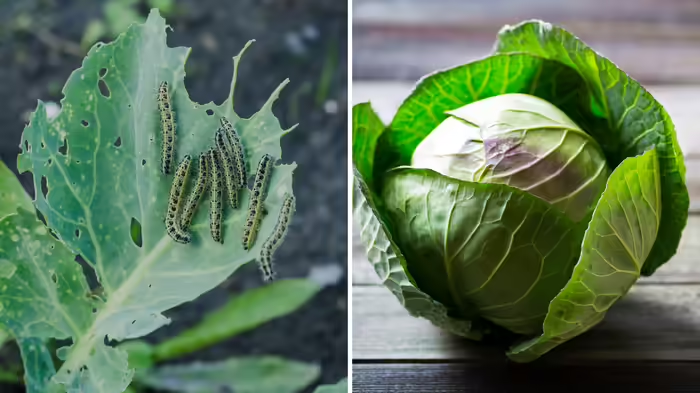
T
Cleaning leafy vegetables like cabbage can be tricky — hidden dirt, pesticides, and even tiny insects often go unnoticed. But home expert Neema Seth has shared a simple and effective way to make cabbage completely clean, pure, and safe to eat.
1. Purifying the Leaves
After soaking the cabbage leaves in a salt and vinegar solution for the recommended time, it’s essential to wash them thoroughly. This step ensures that no residue from the solution remains.
Remove the leaves from the bowl, rinse them properly in clean water, and separate them gently. Give them one final rinse in fresh water to make sure no trace of salt or vinegar is left behind.
This process helps eliminate any insects or chemical impurities, leaving the cabbage completely pure and ready for cooking.
2. The Easy Way to Chop Cabbage
Cutting cabbage leaf by leaf can be time-consuming. Neema Seth suggests a smart shortcut — the ‘bunch method.’
Take 5 to 6 leaves together, roll or hold them tightly as a bunch, and chop them straight. This technique saves time and gives you evenly cut pieces. You can also stack the leaves in layers before slicing for uniform cuts.
3. Ready to Cook and Serve
Once you’ve washed and chopped the cabbage using this trick, it’s perfectly ready for use.
Soaking in the salt-vinegar solution ensures it’s free from insects and germs, while the bunch-cutting method helps reduce prep time.
Clean, fresh, and well-cut cabbage not only looks better but also enhances the overall taste of your dish.
Disclaimer:
The methods and tips mentioned in this article are based on information available from YouTube and online sources. Navbharat Times does not take responsibility for the accuracy or scientific validity of these claims.
W
Discover more from SD NEWS agency
Subscribe to get the latest posts sent to your email.